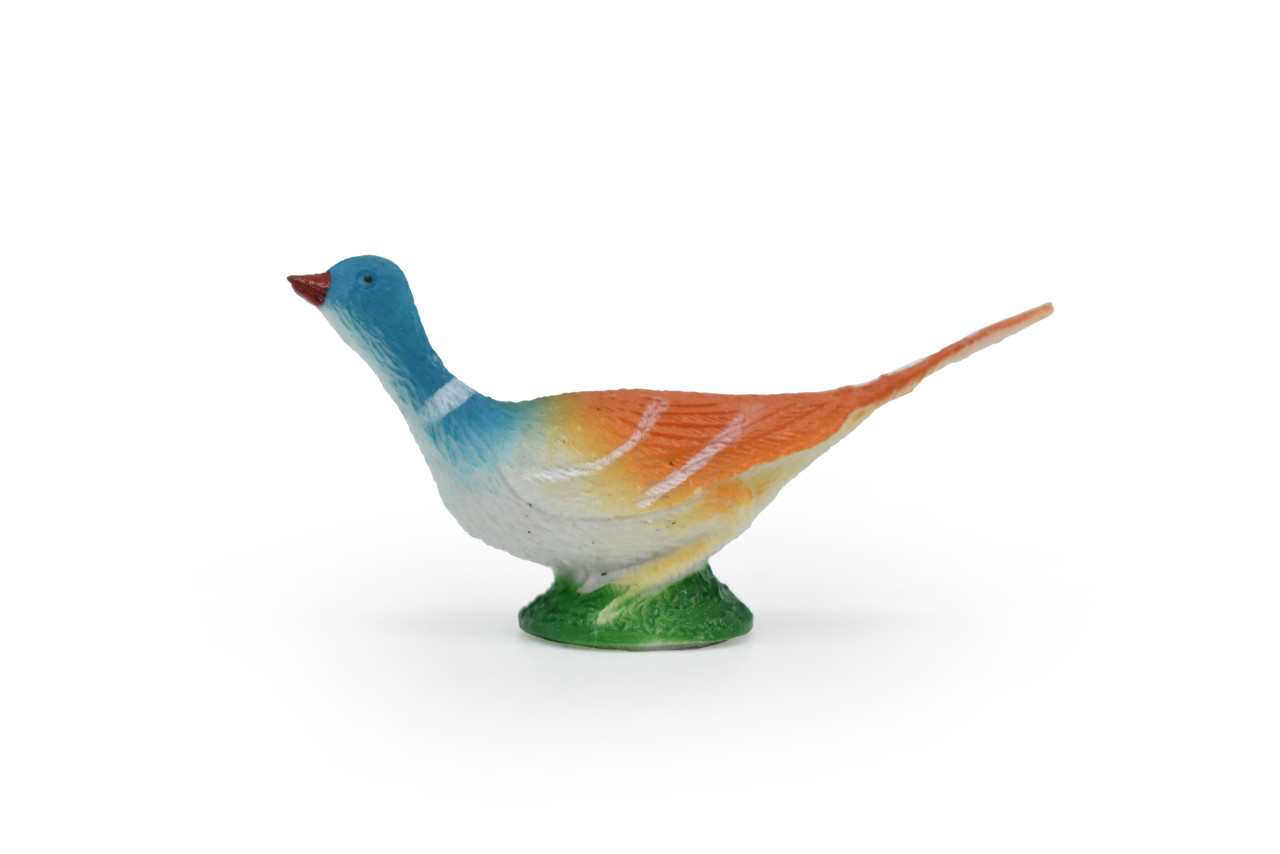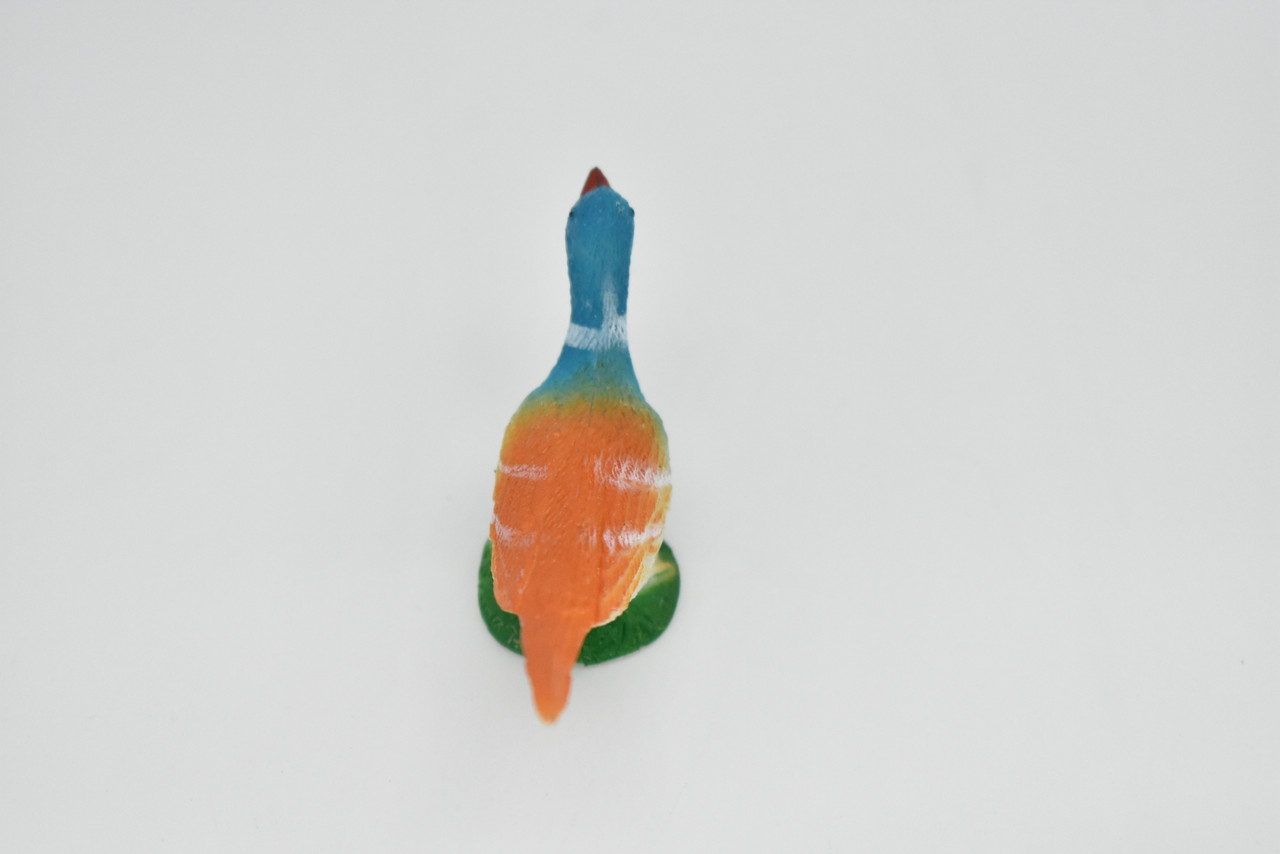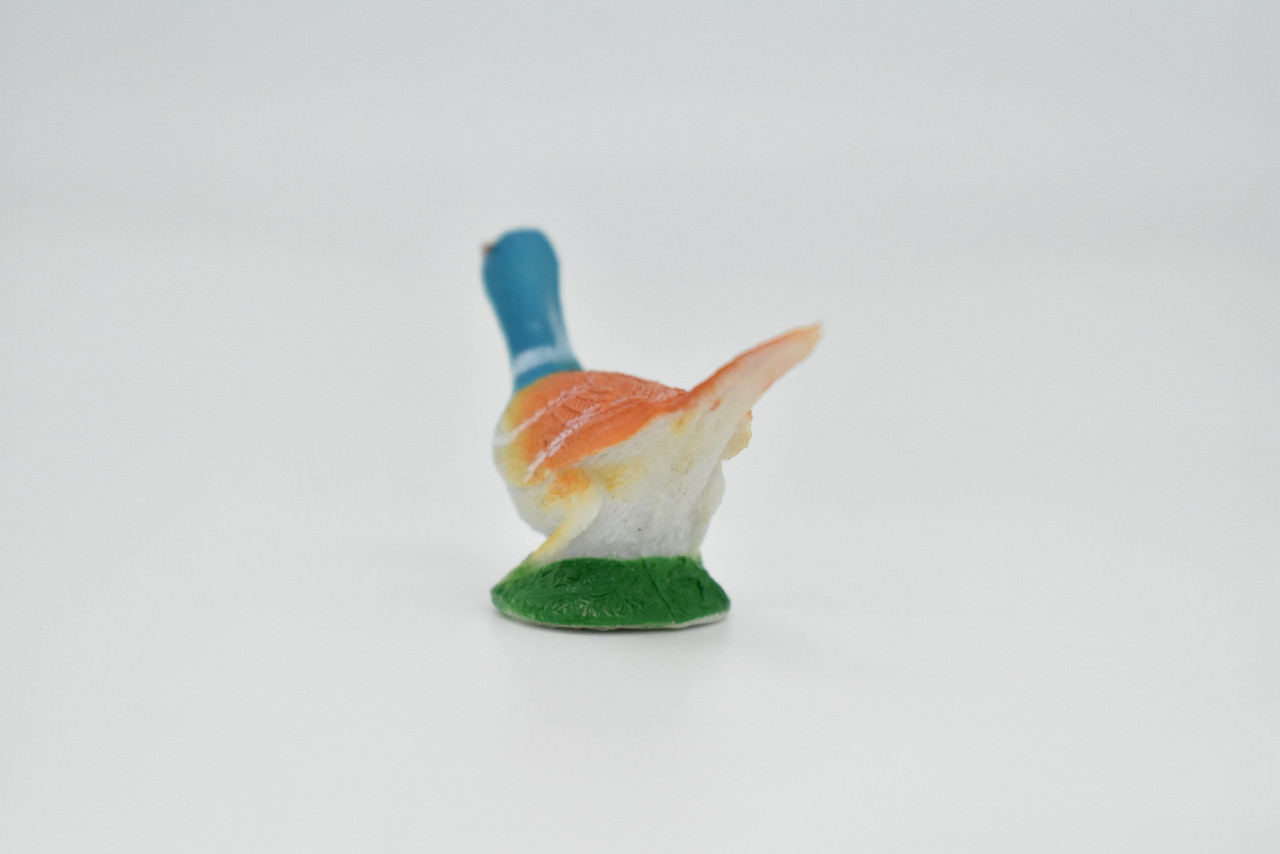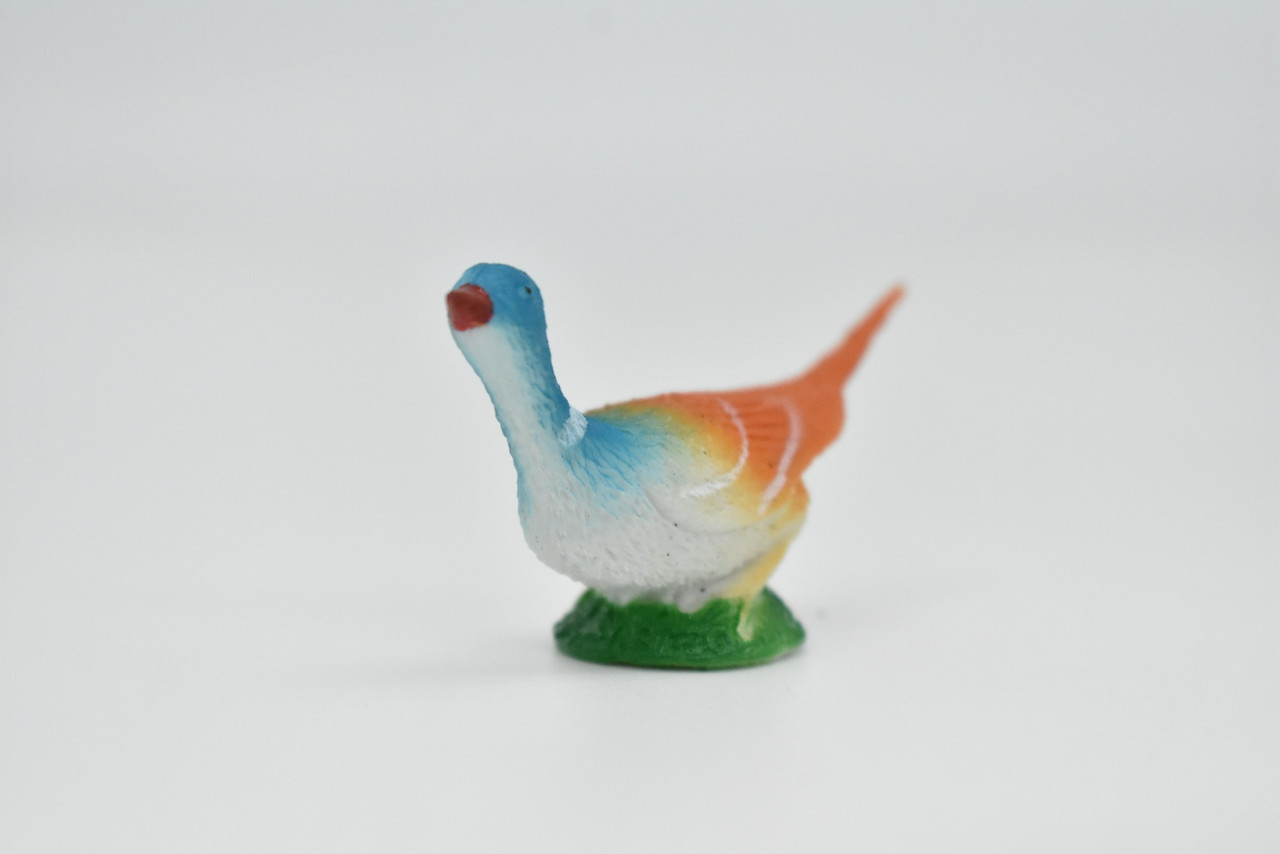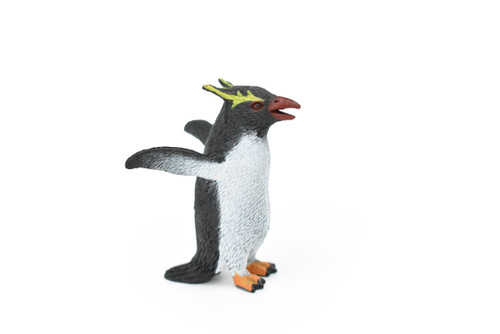Product Description
Our Plastic Ring-necked Dove Toy This is one of our series of lively and lifelike plastic animals, or in this case, plastic birds. Its realistic shape and details will be enjoyed as part of a school project, diorama plastic animal collection, as a party favor, or gift. Our plastic ring-necked dove measures 2-1/2 inches from beak to tail.
About Ring-necked Doves Found in East and South Africa, the ring-necked dove is also known as the Cape turtle dove or the half-collared dove. These prolific birds have black eyes, black bills, and purple feet. They are darker on the top of the birds where they are grey and brown. Lower down, one can usually see traces of lavender before moving to the lower bellies where they are white. The tail feathers will usually have white tips. There is some variety among the individuals regarding coloring with some birds far lighter in coloring than other birds. As often happens, the young ring-necked doves will appear much paler than their adult counterparts. These doves measure about 10 inches in length, though some are a little smaller and others are a little taller. Weight varies between about 3 ounces and a little over 6 ounces. Noisy in flight, they are also noisy on the ground with calls when they are clustered around a water source. As long as there is a water source, they are present, and they avoid the dune fields of Nabib and other waterless regions. They are most present in shrubland-type areas, as well as woodlands. The planting of trees in groves around farm homes has aided their spread into areas that previously were not as hospitable for them. Besides their need for water, they feed on the seeds of various grasses, fruits of certain plants, and insects such as termites, earthworms, weevils, etc. They are, in turn, prey for lanner falcons, black sparrowhawks, barn owls, herons, storks, reptiles, wild cats, jackals, etc. As is often the case, being small is a distinct disadvantage for them, as they are prey for so many creatures. There is no respite during the egg-laying process, as their nests are subject to attack by squirrels. The IUCN has declared that they are of

